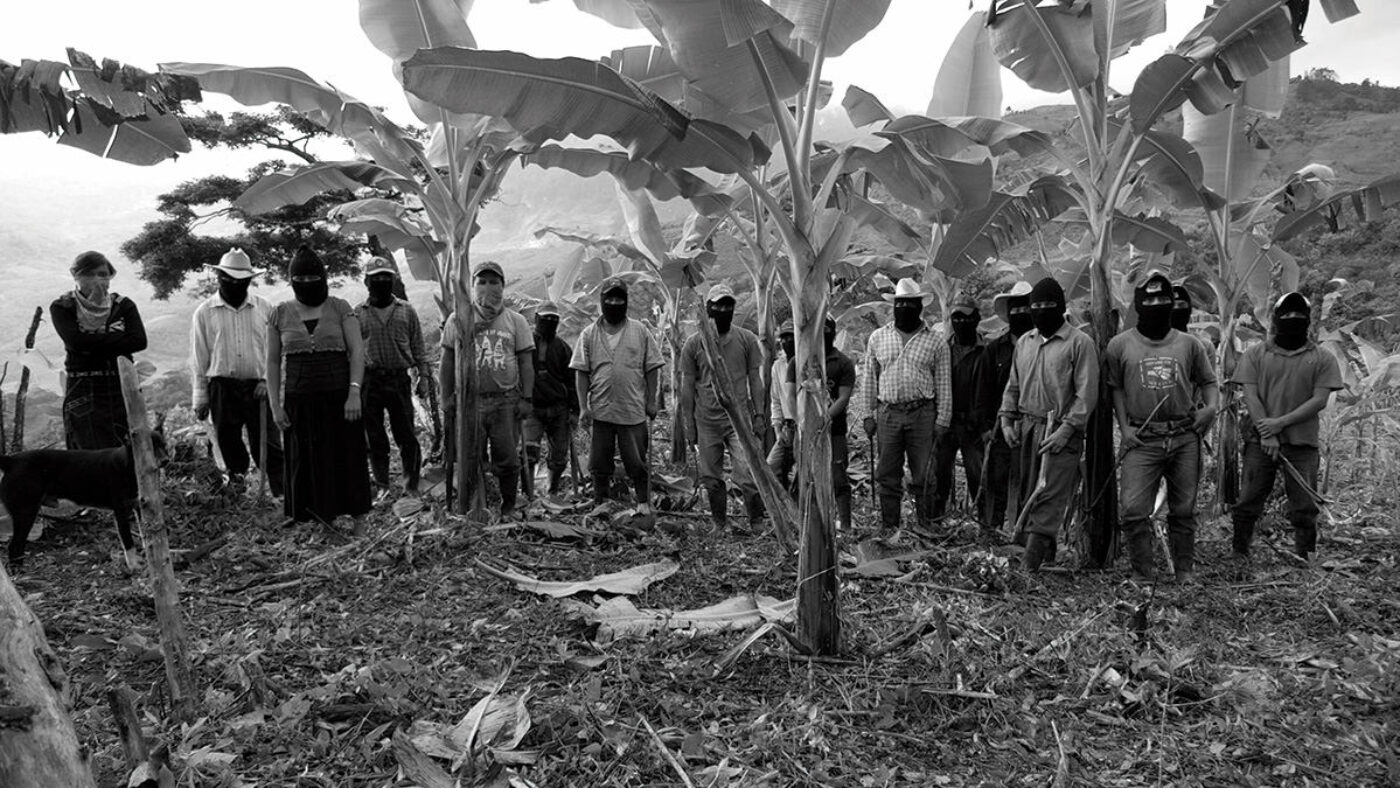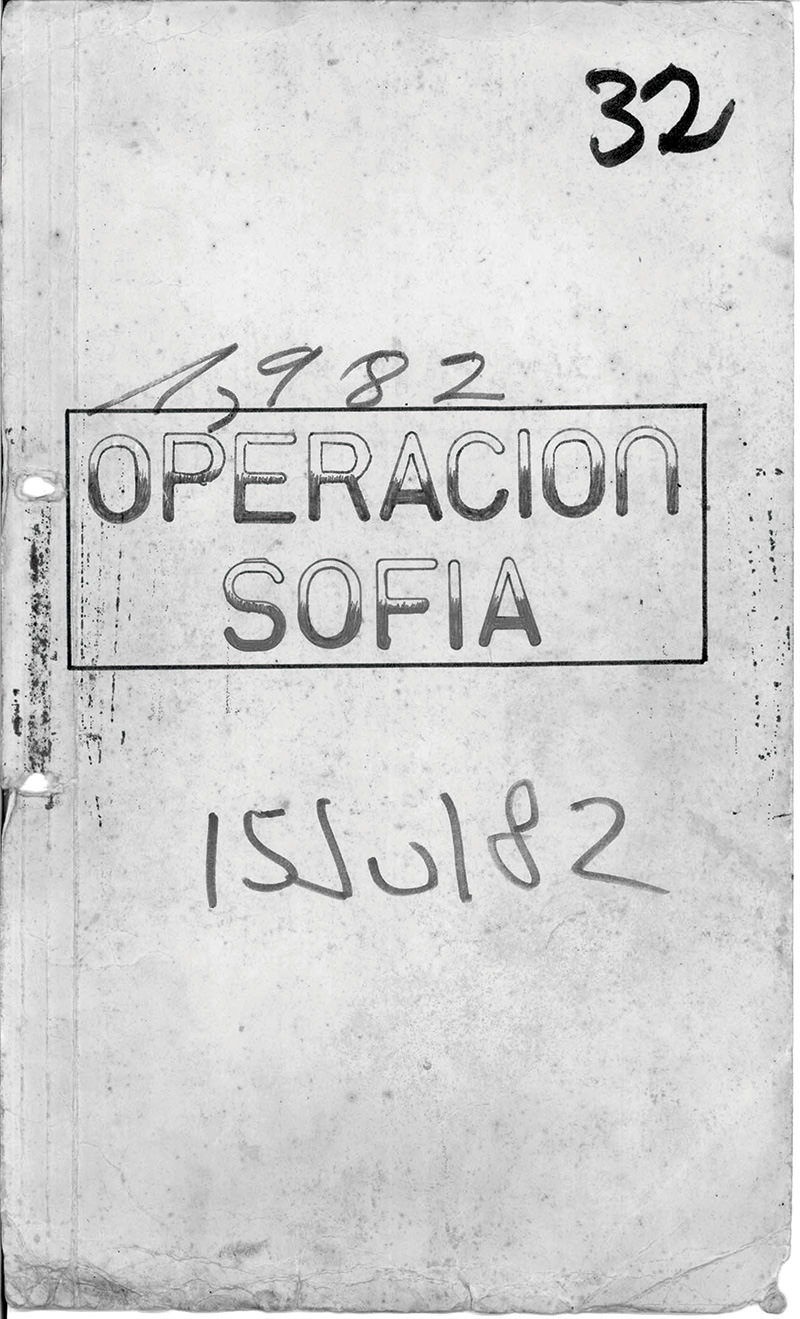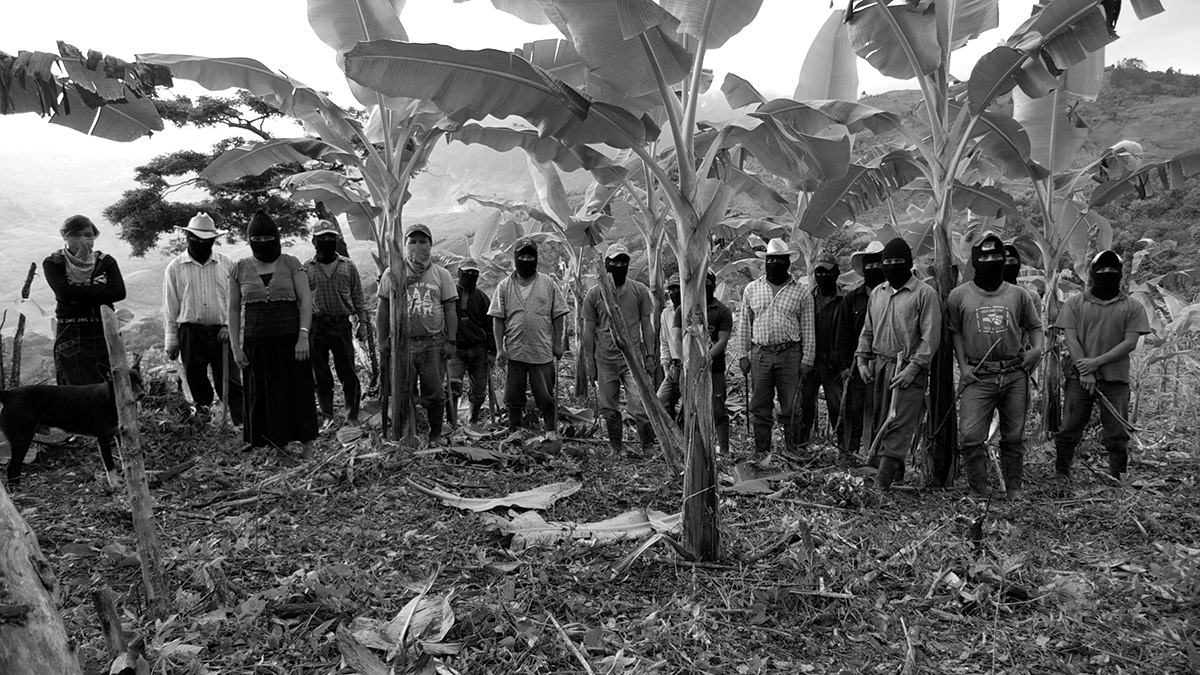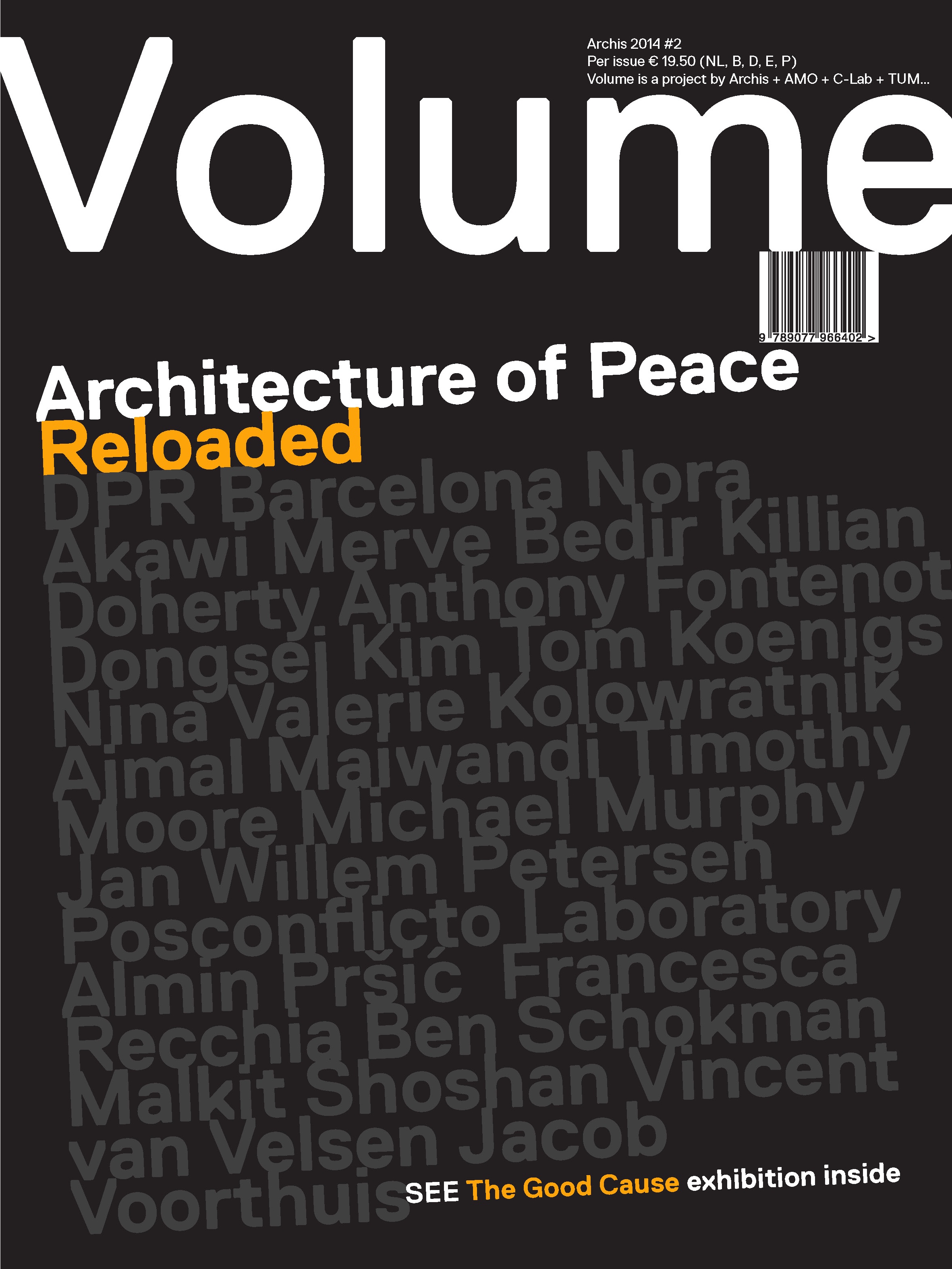
After thirty-six years of internal armed conflict, Guatemala presently faces an enormous inequity in housing and land ownership. Posconflicto Laboratory emerged as a long-term research platform to uncover how tactical architecture might address this imbalance. DPR Barcelona sat down with Posconflicto Laboratory to discuss the challenges of working in such highly politicized terrain, and the agency of architecture in addressing core issues of inequity and housing rights.
DPR: Can we state that conflict is over in Guatemala? Was a Peace Accord signature enough?
Posconflicto Lab: With a predominant indigenous population, the historical struggle for access to land has been at the core of conflict in Guatemala. Retaining one of the most uneven land distribution patterns worldwide, being the second most inequitable country in Latin America – where roughly two percent of the population owns sixty-five percent of all productive farmland – conflict is far from over. After thirty-six years of internal armed conflict, and with over 200,000 deaths, the system of income and land distribution inequity has remained fundamentally intact. After the signing of the 1996 Peace Accords between the Government of Guatemala and the Unidad Revolucionaria Nacional Guatemalteca (URNG), conflict has shifted into the political, but still maintains a form of violent repression.

DPR: What is Posconflicto Laboratory and which is its main objective?
PL: It’s a collective rough attempt, a long-term and still embryonic project that questions the idea of the political and the significance of architecture in a much-tormented region with a stubborn history of rebellion and failure in making a less unjust society. In that sense, Posconflicto Laboratory is at the same time a project and a collective long-term research platform, organized as an inter-institutional and transdisciplinary space centered on housing and post-conflict Central America. The laboratory has approached institutions, collectives, professionals, and artists in Central America to share ideas and experiences around space production. The long-term collaboration has opened the door to many possibilities, especially in helping create a collective space for reflection, research, and actions.
We consider that focusing on housing ought to include the following dimensions: First, adequate housing provision as a preoccupation beyond conflict and post-conflict, as the housing problem was only exacerbated with the confrontations, but didn’t start with them; Secondly, a dwelling, a basic human shelter, is meaningful only in relationship with its environment, with the need for a comprehensive vision of the Central American territories, where housing provision is a main point of departure; and finally, housing and public space, as complementary elements of the urban landscape, need to be fundamentally redefined in the post-conflict political context.
DPR: Could you state the main causes and consequences of civil war in the region?
PL: We’d rather speak about armed conflicts than wars in the region: to speak about war dismisses the violent and often genocidal repression by the elite-backed military governments against vulnerable populations, today punishable by international law. The armed conflicts that took place in Guatemala (1960-1996), Nicaragua (1974-1990), and El Salvador (1980-1992) had deep implications in the region as a whole. It should come as no surprise that labor exploitation is really at the causal core of armed conflict in Central America. The colonial and republican land tenure structure known as the latifundio, or large-landowning farming system, systematically dispossessed peasants – mostly indigenous – from communally owned lands into subsistence small-plot farming or minifundio. The generalized social discontent derived from the long-standing oppressive living and working conditions maintained by the economic elite and military dictatorships, along with increasingly violent political repression, led to rebellion and the emergence of guerrilla movements in the region. One of the first class-conscious insurrections in Latin America, a peasant rebellion attempting to overthrow the landholding elite, took place in El Salvador in 1932. The revolt was violently crushed by the Salvadoran State in a genocidal massacre of an estimated 30,000 peasants, mostly indigenous, over the course of a few months. In similar counter-revolutionary lines, in 1954, an elite-backed and CIA-orchestrated military coup overthrew the democratically elected government of Jacobo Árbenz, ending ten years of democratic reform in Guatemala. The conservative ‘liberation’ campaign effectively reverted the much sought for progressive 1952 Agrarian Reform decree. Fueled by the Cuban Revolution rising to power in 1959, guerrilla organizations soon began operating in Central America. Counterinsurgent military repression brought forced displacements, with the violent uprooting of communities and systematic disregard for human rights – especially in rural areas – having far-reaching consequences in the region. Government infrastructure divestment in conflict areas magnified internal migration patterns towards urban centers, exacerbating precarious living conditions, and prompting segregation in rapidly growing slums. In addition, demobilized military structures provided fertile grounds for the proliferation of organized crime, the debilitation of public institutions and the privatization of public space. After more than a decade of officially ending armed conflicts in the region, the fundamentally broken Central American social fabric is most commonly expressed in the form of insecurity and violence.

DPR: Poverty in rural regions somehow generated inner migrations from countryside to the city. Did armed conflict increase the structural housing deficit in the city? Or the latter only represents the maximum level of discrimination against indigenous people?
PL: Forced displacement had long taken place in Guatemala before armed conflict broke out in 1960. But in the 1980s, with the government shifting military strategy from selective massacres to genocide, an unprecedented displacement of approximately 850,000 Guatemalans – ten percent of the population, mainly Mayan indigenous peasants – took place. Of these, an estimated 150,000 took refuge in Mexico, and similarly around 150,000 were gradually displaced towards urban centers in the country. Given the dispersed and anonymous nature of forced displacement, it’s difficult to establish today the degree to which Guatemala City’s housing deficit was directly affected by armed conflict. What is clear, however, is that a significant segment of the population was displaced towards urban centers and ultimately sought refuge in Guatemala City’s periphery. Estimates indicate that between 1978 and 1985, during the most violent period, between 20,000 and 45,000 indigenous peasants settled in the Guatemala City Metropolitan Area. Today, there’s an estimated 250 slums in Guatemala City, with an estimated population of 200,000 people, representing twenty percent of the total population. The city being unable to provide access to itself, thereby ‘rewarded’ migrants and refugees with periphery, misery, overcrowding, lack of urban services and income precarity.
But forced displacements began much earlier. Three decades after the country gained its so-called independence in 1821, systematic displacement of indigenous peasant communities took place with the 1871 Liberal Revolution. By dropping the long-term land leasing contracts given to indigenous peoples’ communally owned lands, the ‘liberal agrarian reform’ methodically dispossessed indigenous people from their communal patrimony. As a Liberal project of state modernization, it soon revealed an overriding agenda: to regiment labor supply for economic expansion to bring the rise of capitalist agriculture in Guatemala. Extensive displacement patterns were generated by the ‘Jornalero’ Regulation decree, requiring indigenous peasants to work between 100 to 150 days a year, mainly at coffee plantations, but also on government infrastructure projects. As a conquest-inherited wage, this ongoing project of dispossession continues to be brutally enforced, violently repressing the pacific defense of territories instigated by the economic elite and corporate multinational interests. In light of the historic precarious living conditions in rural areas, the long standing labor-induced migration patterns towards Guatemala City – along with the 1976 earthquake – heavily determined the housing deficit in the Guatemala City Metropolitan Area, and was fundamentally aggravated by internal migrations and forced displacement during the armed conflict. In spite of this, the Resettlement Accords signed in Oslo in 1994 didn’t recognize uprooted communities’ possibility of permanence, only considering the option to return – without taking into account the city – arguing that ‘resettlement areas are predominantly rural’.
DPR: Do you think that it is possible to use architecture as a tool to generate social vectors and interactions to integrate segregated cities as the ones of Central America?
PL: We believe there’s a great need to reassess the post-conflict paradigm by first acknowledging the underlying segregationist and ‘pacifist’ project of neoliberal urbanization in Central America. Only then can we critically rethink the need for a project beyond statistical, programmatic, and abstract notions of inequity and social exclusion. In that sense, we believe that architecture as a projective mediating device, may provide for tangible, inclusive and credible possibilities for the production of common spaces. We do realize that the legacy of power relations embedded within the municipal, regional, national and supranational state apparatus may only be countered by its own terms, as a political struggle. Architecture as a project, however – in its process and form – can significantly contribute in building an alternative ethos, based on communal modes of trust-building and solidarity. As an example on the mediating significance of architecture as an urban project, let’s take a look at a unique instance derived from the ethos of the Modern Movement in Guatemala. The conception of Guatemala City’s Civic Center, a national and municipal project integrated within the city, lies in the unions and peasants movements’ struggle against dispossession that supported ten years of progressive social reform by the revolutionary democratic governments of Arévalo and Árbenz (1944-1954). In spite of the elite-backed counterrevolutionary military coup of 1954, the project was partially built by the military governments that followed. Integrated within the 1950s expanding city, the public workers’ housing – an exemplary and critical inclusive component of the project – unsurprisingly was never built, failing to gain political support by subsequent governments favoring ‘pacifying’ repression over social reform. Today, with the advent of neoliberal urbanization, architecture may indeed be used as a tool to counter neglect and segregation, not only by generating social vectors and interactions, but by contributing in the building of an alternative collective ethos promoting inclusive spatial strategies at different scales: from the block to the region. A static approach towards the profession, a Modernist legacy, is no longer the answer. We need to focus on an open and flexible process, confronting and addressing conflicting economic and social interests, while being inclusive not by consensus but by dissensus.
DPR: How does Posconflicto Laboratory rethink architecture in relation to the territory and the idea of the political?
PL: The instrumentality of architecture is all too significant when considering the idea of the political, especially in a territory as disputed as Central America. Following Vietnam’s ‘strategic villages’, US counterinsurgent tactics were rehearsed in Guatemala during the 1980s in the form of scorched earth terror (1980-1984) and the aldeas modelo (1982-1986). As an architecture project aimed at constructing the idea of a ‘model’ village, the aldeas modelo were designed by the Guatemalan military government as an experimental archetype of control to segregate and contain indigenous peasant communities from collaborating with the insurgency, but were ultimately a strategy of cultural, social, and economic dispossession. With the aim of disenfranchising indigenous communities and controlling all productive activities, the territorial system of the aldeas modelo provided the only secure grounds away from the ongoing massacres. An idea of the political was being constructed, where counterrevolutionary ‘reformism’ allowed ‘the internal enemy’ to be liberated from communal or ‘communist’ life.
As a counterpoint, let’s consider the architecture of the self-managed cooperative housing experience initiating in 2004 in Central America. Following the Uruguayan self-managed and mutual aid cooperative housing movement initiated in the 1960s, the Federación Uruguaya de Cooperativas de Vivienda por Ayuda Mutua (FUCVAM) and the Swedish Cooperative Center (today We Effect) signed an agreement in 1998 to promote the self-managed cooperative movement in Bolivia, Paraguay and Central America. A struggle for access to land, the movement’s organization focuses on the struggle for housing as a human right – and not as a commodity – with collective ownership of property as a cornerstone. As a self-managed cooperative initiative involving a highly committed organization, the productive potential of solidarity allows members living below the poverty line to access adequate housing, something otherwise unimaginable. As cooperativists acquire hands-on knowledge through the self-building mutual aid process, experience exchanges among urban and rural cooperatives in El Salvador, Guatemala, Honduras, Nicaragua and Costa Rica reassert autonomy at local and regional levels. In this way, architecture as a project becomes an instrument of appropriation, giving form to a common and open-ended territorial project of inclusion. Furthermore, an idea of the political is being constructed at a regional scale, where autonomous struggle has allowed the dispossessed and vulnerable to live a dignified life, taking an active role in society at large. Posconflicto Laboratory intends to build upon the limits of the self-managed cooperative housing movement by confronting the aldeas modelo neoliberal post-conflict paradigm, within and against urbanization, and rethink the idea of the political while starting from the scale of architecture as a territorial project.

DPR: One of the main challenges faced by Central American people is the question of land ownership and income inequity. How do you address this issue today?
PL: At least from a cultural standpoint, we believe there’s a significant contribution to be made in rereading, renaming, reimagining, and possibly reenacting strategies from within currently invisibilized struggles rooted on structural neglect. The failures, limitations and accomplishments brought by both the Sandinistas’ 1981 Agrarian Reform in Nicaragua and the Zapatistas’ 2003 Caracoles in Southern Mexico may provide proof of inherent contradictions, but possibly also leads in readdressing income and land inequity today. At the peak of the Cold War in 1981, two years after Frente Sandinista de Liberación Nacional (FSLN) came to power in Nicaragua, an ambitious Agrarian Reform process was set in motion, ultimately providing agricultural land to a third of the country’s population. The strategy privileged state farms, but peasants increasingly pressured for land custody in community assemblies for cooperative ownership. With the US-financed Contras or counter-revolutionary militias, and armed conflict reappearing along with an imposed trade embargo, the ongoing Agrarian Reform was ultimately eroded by a wrecked national economy, losing crucial support from alienated peasants disaffected by Sandinismo. The state-driven mixed economy as a strategy to democratize production and land ownership was abruptly ended when rural areas voted out FSLN in the 1990 elections, hopelessly reverting the land distribution process.
Outside of the Cold War logic, the Zapatista insurrection of 1994, organized around the Ejército Zapatista de Liberación Nacional (EZLN), brought to the foreground the neglect of indigenous peasants by a 65-year single party government in Mexico. Likewise, as Chiapas never benefitted from the 1910 Mexican Agrarian Reform, the exploitative latifundio-minifundio land system remains in place. Anticipating the neoliberal 1992 Canada-Mexico-US NAFTA agreement, the modification of Mexico’s Constitution Article 27 undermined the legal foundation of community-owned lands or ejidos, forcefully surrendering non-commercial and communal ownership to market speculation. With the struggle for self-determination in indigenous autonomy, self-managed government councils were organized in 2003 around territorial entities or Caracoles as a response. Contrary to Sandinismo’s state-driven farms, and in an alternative mixed economy principle, the Caracoles’ autonomous government councils, or Juntas de Buen Gobierno have addressed inequity by allowing cross-financed modes of income distribution in all productive activities throughout the ejidos. We’re talking about communally owned, but individually and increasingly cooperatively self-managed lands. While land reform in Chiapas continues to be a fundamental struggle against inequity and structural neglect, in reclaiming that ‘the land is for those who work it’, the Zapatistas have set out a long-term strategy against speculative capital, but from within autonomy and beyond alienation. Can we afford to be indifferent to these strategies today?
DPR: Certainly not, as they suggest feasible alternatives given the singularities of the region. Now focusing on your strategies: in your work program you pose the necessity to reinstall the principle of subsidiarity. How does it work?
PL: The need for the city to rethink its own post-conflict understanding on the principle of subsidiarity, and its possibility of re-appropriation is a central motivation behind the Productive Housing Program in Guatemala City. We understand subsidiarity in its cultural-historical, economic and political dimensions. Firstly, to reclaim the Central American city’s cultural-historical autonomous program, in its however complex and contradicting struggles against political centralization throughout the pre-hispanic, colonial, and republican periods, to more directly transform society’s cultural, social, and economic composition. With the retreat of the nation-state to corporate multinational interests throughout Balkanized Central America, municipalities and their metropolitan and regional structures cannot continue evading their co-responsibilities on such a fundamental and pressing issue as housing. From the Mayan Chinamit1, to the Spanish colonial Cabildo, to the Creole republican Municipalidad, the city has long been the most proximate and explicit political entity and today needs to reassert housing as its most crucial autonomous agenda.
Secondly, we understand subsidiarity as a strategy of autonomy in the form of an economic cross-subsidized housing program. Reaganism and Thatcherism’s market fundamentalism – enshrined in the still prevailing Washington Consensus – has deeply impacted Central American cities’ land and housing supply in integrating marginalized social groups, especially migrants and displaced populations. With the wave of privatization initiating in the 1990s, Central American governments left workers’ housing supply to the market, resulting in poorly designed housing solutions in structure, size, and services. The time has come for municipalities to address housing as a strategic project – within and against urbanization as a result of commodification – for the benefit of all people, especially the most vulnerable. That is, to set in motion a project with a crossed-subsidy financial mechanism directed towards both low income groups – with self-managed cooperative housing – and middle income groups – with market-driven associative housing – in central urban areas.
And lastly, as in the case of Guatemala, we acknowledge the principle of subsidiarity with respect to local governments’ co-responsibility in coordinating the provision of adequate housing, as stated in the Social and Economic Accords prior to the signing of the Peace Accords on December 29th 1996. There’s a clear need to more substantially and productively counter, from the local and communal political leverage, the ongoing corporate accumulation by dispossession and the deliberate dependency on foreign aid capital, which for too long has crippled the possibility of a common autonomous project. Today, for the Guatemalan national and local governments to continue neglecting uninterrupted land and housing deprivation is to continue disregarding a historical struggle for dignity and justice, and fundamentally questions the legitimacy of any agreement or peace accord.
DPR: And how does your idea of productive unit cells fit within colonized neoliberal space of the city?
PL: The productive unit cells are the bare expression of power differentials, as a class divide with the haves and have-nots in accessing housing ownership. Both of these social groups, comprising the majority of households, are however fundamentally marginalized as they have no option for adequate housing in the city. Subject A is an individual person currently living in a marginalized condition of poverty or extreme poverty, with no access to adequate housing, and with a monthly income between one and four times the minimum wage per household. And Subject B is an individual person currently living in a marginalized suburban condition, with very limited options to acquire housing in central urban areas, and with a monthly income between five and fifteen times the minimum wage per household. Moreover, Subject A is predominantly composed by a continuing influx of indigenous people settling in the Guatemala City Metropolitan Area. It is the cell and not the overall urban image that acts as the starting point for the Productive Housing Program, where individual cells correlate the two post-conflict subjects. The program works as a crossed-subsidy financial mechanism, and as an architecture and urban instrument to revert the chronic housing shortage of low- and middle-income sectors unprotected by public policy.
Financially, the profit generated by Project B’s market-driven associative operation provides the necessary capital counterpart to subsidize Project A; a self-managed cooperative operation which allows Subject A to access adequate housing and at the same time develop productive activities on-site, while integrating into central urban areas. Project B, the subsidiary operation, allows Subject B to access quality housing in central urban areas benefited by public sector urban recovery projects. Working from the city’s small scale, the Productive Housing Program’s assembled productive unit cells, together with a patio-portico and a community development center, compose the productive housing archetype as its generic operative architecture.
The productive unit cells (projects A and B) insert within the colonized neoliberal space of the city as a pair, and furthermore as a single committed spatial operation, within a distance of no more than four hundred meters from each other and from a public transport station. Their central location and strategic interdependence organically counters social segregation and marginality, as both Project A and Project B include a ten to twenty percent programmed allowance for the inclusion of both unit cells. With social conflict embedded in the productive unit cells, the Productive Housing Program transforms the post-conflict subjects’ vindication into an operative strategy about their struggle for social equity.
DPR: What is the legal status of Posconflicto Laboratory? And which are the main challenges, goals, and failures that you have faced while negotiating with institutions, professional agents, and cooperatives?
PL: As a transitional and experimental space of collaboration, Posconflicto Laboratory sees itself as a constantly evolving and ephemeral cultural platform and project, and is in the process of analyzing the possibility of a legal status. By openly working within a post-conflict context, and reaching out to a wide range of institutions, organizations, collectives, experts, and artists, the platform has encountered all sorts of contentions: from grief and alienation, to sectorial disputes, to pervading ideological prejudice. Intermediating efforts between and within public agencies, including historically opposed political actors, as well as the possibility of enabling relationships with independently organized social movements and collectives has by far been the greatest challenge. The partnership with national and international universities has proven critical in the trust-building process, having substantially contributed in mediating sectorial interests and deeply confronted ideological views. After the initial experience in collaborating from within the public institutions’ perspective towards a Productive Housing Program in Guatemala City, the platform’s prospective standpoint has been critically reassessed, and has significantly shifted into acknowledging social movements’ ongoing struggle. With Guatemala City’s Municipal Council not having ultimately supported the recently created Empresa Metropolitana de Vivienda y Desarrollo Urbano (EMVDU) with the creation of a municipal housing land bank, as originally established and allocated in its 2012 Constituent Act, the agency’s operation has been fundamentally undermined. After two years, with the restless struggle by a single self-managed cooperative, and burdened by the absence of municipal support in granting land access, a single project is underway. The developer-backed conservative Municipal Council, despite having voted for the agency’s creation, has disregarded the crossed-subsidy social housing program –and most significantly, the self-managed cooperative housing movement – in demonstrating its reluctance to prioritize housing as a social agenda. As a failed political pact, and in an unrelenting market-driven context dominated by urbanization’s corporate interests and supported by neoliberal policy, the platform has increasingly oriented itself towards supporting social movements, independent organizations, and collectives in addressing alternative strategies in the struggle for adequate housing in Central America.
Posconflicto Laboratory interviewees: Andreas Faoro, Sandra Gutiérrez Poizat and Roberto Soundy.
Notes
1. A clan settled in an area of common property, where each individual had the right to use the land, but not in the form of personal property. Diccionario Histórico Biográfico de Guatemala. Guatemala 2004.
 This article by dpr-barcelona was published in Volume’s 40th issue, ‘Architecture of Peace Reloaded’.
This article by dpr-barcelona was published in Volume’s 40th issue, ‘Architecture of Peace Reloaded’.